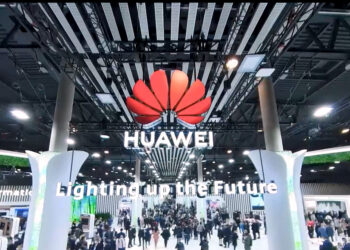A Star Reborn in the Digital Galaxy
In a world where digital platforms are dominating the market, some legacy brands are refusing to fade into oblivion. One such story is that of Comet, a name once synonymous with electronics and home appliances in the UK. Although it disappeared from the high street a decade ago, Comet has resurfaced not as a brick-and-mortar retailer, but as a fully digital platform. This article explores Comet’s journey, from retail powerhouse to administration, and now its resurrection in the online marketplace.
The History of Comet: A Retail Giant Once Shining Bright
Founded in 1933, Comet began as a modest business and evolved into a retail colossus during the late 20th century. It specialized in household electronics, computers, and appliances, becoming a go-to destination for technology needs in the United Kingdom.
Key Milestones in Comet’s Early Growth:
A. 1933 – Humble Beginnings: Originally started as a lighting business, Comet gradually transitioned into broader electrical products as demand grew.
B. 1960s – Expansion Era: By this time, Comet had opened multiple outlets, establishing itself as a leader in the consumer electronics segment.
C. 1980s – National Recognition: Comet expanded nationwide, known for competitive pricing and a wide product range.
D. 1990s to Early 2000s – Tech Boom: The rise of personal computing and home entertainment systems contributed significantly to its growth.
The Downfall: What Happened to Comet?
Despite its early success, Comet’s dominance began to wane with the advent of e-commerce and changing consumer behaviors.
Factors Behind Comet’s Collapse:
A. Inability to Adapt to E-commerce: While competitors like Amazon and Currys quickly embraced online sales, Comet lagged behind in building a robust online presence.
B. Financial Struggles and Ownership Changes: The brand changed hands several times, each transition contributing to operational inefficiencies and strategic missteps.
C. 2012 – Entering Administration: Comet officially went into administration in November 2012, leading to the closure of over 200 stores and the loss of approximately 6,900 jobs.
D. Poor Customer Experience: Complaints over customer service, returns, and warranty claims marred its reputation during its final years.
E. Shift in Consumer Trends: Increasing trust in online shopping, faster delivery services, and competitive pricing from new-age retailers made Comet appear outdated.
The Digital Rebirth: Comet’s New Identity
After a long hiatus, Comet has been reborn, this time shedding its physical stores to emerge as an online-only digital platform. This new direction isn’t just a branding makeover it’s a full-scale digital transformation that aims to capitalize on the growing dominance of e-commerce.
What is the New Comet Platform?
The new Comet is a modern, online marketplace where customers can shop for a variety of consumer electronics and appliances. From laptops and smartphones to washing machines and smart TVs, the platform aims to serve as a one-stop shop for technology and home solutions.
Key Features of the New Comet Digital Platform
A. User-Friendly Interface: The new website is built for smooth navigation, allowing users to easily browse, filter, and purchase products.
B. Wide Product Range: Comet now hosts an extensive catalog, featuring major brands across electronics, home appliances, and gadgets.
C. Vendor Marketplace Model: Similar to Amazon or eBay, Comet has introduced a multi-vendor system that allows third-party sellers to list their products.
D. Personalized Experience: AI-powered recommendations and personalized homepages based on user behavior improve the customer experience.
E. Secure Checkout Process: With multiple payment options and high-level encryption, the new platform emphasizes user security and transaction safety.
F. Customer Support Integration: Enhanced chatbots and 24/7 email support make customer service more accessible than ever before.
G. Sustainability Focus: Comet is also highlighting eco-friendly practices, including selling refurbished goods and promoting energy-efficient appliances.
Strategic Business Model: What Makes the New Comet Competitive?
The platform’s reimagined business model is designed to compete not just with legacy retailers but with digital-first brands.
Core Strategies:
A. Marketplace Approach: By adopting a vendor-based model, Comet reduces inventory costs while increasing product availability and variety.
B. Data-Driven Decisions: The platform utilizes real-time analytics to understand trends and customer preferences, leading to smarter stocking and promotions.
C. Digital Marketing Integration: Targeted advertising, SEO optimization, influencer marketing, and content-driven strategies are central to customer acquisition.
D. Partnerships with Top Brands: Comet has secured affiliations with leading manufacturers, offering competitive pricing and genuine products.
E. Subscription-Based Loyalty Program: Future plans include launching loyalty schemes and premium memberships to build a community of regular shoppers.
Comet vs. Competitors: Standing Out in the E-Commerce Space
Re-entering the market isn’t easy, especially with juggernauts like Amazon, Currys, and Argos dominating the UK tech space. However, Comet is aiming to carve out a niche by combining legacy trust with modern convenience.
Comparison Table:
| Feature | Comet Digital | Amazon UK | Currys | Argos |
|---|---|---|---|---|
| Multi-vendor Platform | Yes | Yes | No | No |
| Physical Stores | No | No | Yes | Yes |
| Focus on Electronics | High | Medium | High | Medium |
| Loyalty Program | Planned | Yes | Yes | Yes |
| Sustainable Products | Yes | Partial | Partial | Partial |
Marketing and SEO: A Digital-First Growth Strategy
Comet’s digital transformation is anchored in robust online marketing strategies aimed at long-term SEO success and high AdSense potential.
Marketing Tactics Employed:
A. Content Marketing: Educational blogs, how-to guides, and product reviews are regularly published to capture organic search traffic.
B. Email Newsletters: Personalized email campaigns target different audience segments based on past browsing or purchase history.
C. Social Media Campaigns: Active presence on Facebook, Instagram, Twitter, and LinkedIn to engage with users and share promotions.
D. Affiliate Programs: Comet partners with content creators and websites to drive referral traffic and increase brand visibility.
E. On-Page SEO Optimization: Product pages are optimized for keywords, meta descriptions, image alt texts, and internal linking.
F. Pay-Per-Click Advertising (PPC): Strategic use of Google Ads and Facebook Ads to gain immediate visibility and conversions.

User Reviews and Feedback: Initial Impressions
The new Comet platform has received a mixed but generally positive response from users and critics alike.
Positive Aspects:
A. Modern website design
B. Competitive pricing
C. Wide product selection
D. Trust in the brand name
Areas for Improvement:
A. Faster delivery logistics
B. Better mobile app performance (under development)
C. Expanded payment methods like Klarna or PayPal Pay Later
The Future of Comet: A Digital-Only Legacy
Comet’s digital comeback isn’t merely a nostalgic revival—it’s a forward-looking business strategy. By embracing cutting-edge technologies, customer-centric designs, and sustainable practices, Comet is poised to compete in the evolving online marketplace.
What Lies Ahead for Comet?
A. Mobile App Launch: A user-friendly mobile application is in the works to improve mobile shopping experiences.
B. Augmented Reality Features: Plans are underway to introduce AR tools for visualizing products in home settings before purchase.
C. Global Expansion: After stabilizing in the UK, Comet aims to explore international markets with region-specific strategies.
D. Green Technology Segment: Focused initiatives to sell more eco-friendly and energy-saving devices.












